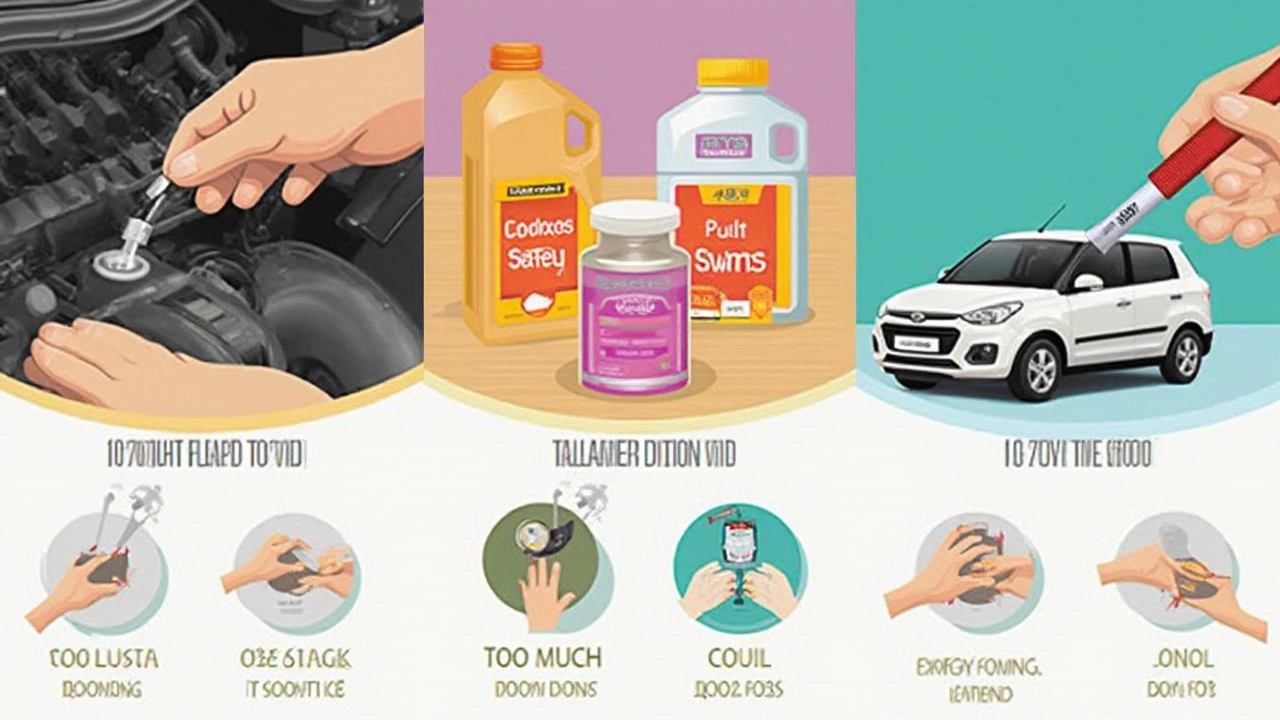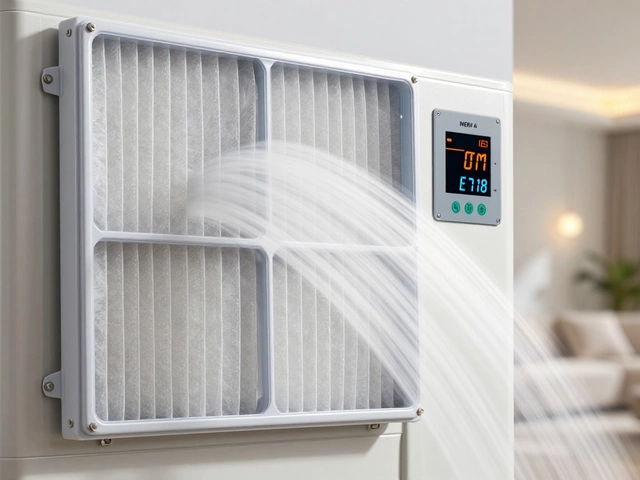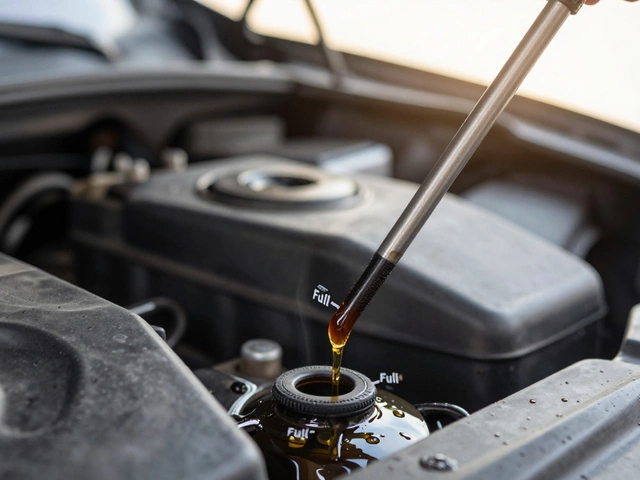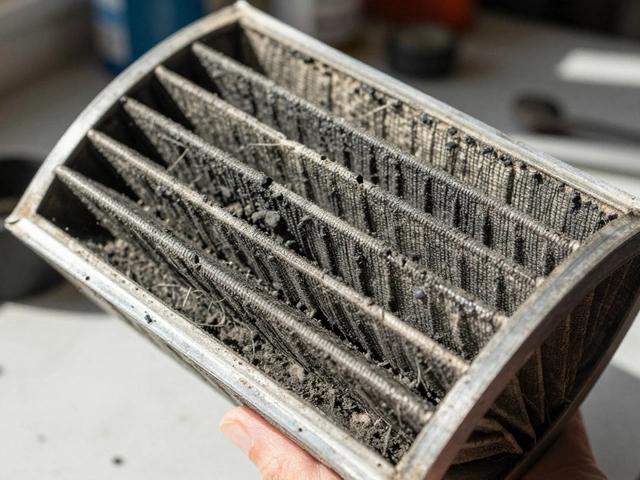
So, your oil light flashes, and you think, “Can I just add oil to my car and move on?” Totally fair question—and way more common than people admit. Not everyone wants to play mechanic, but you do need to keep your engine alive.
Add oil? Sure, you usually can, but there’s more to it than just dumping a bottle in. Your engine lives and dies by the right amount of the right oil. Use too little and you risk big damage. Add too much, and your motor won’t be happy either—oil can actually foam up, mess with pressure, and even wreck seals. Wild, right?
Before you grab that bottle, you should check how low your oil really is. Did you know most folks either overfill or wait too long, both of which are just as bad? The sweet spot is key. I’ll walk you through how to check your oil without feeling lost, what to do if the oil’s barely on the dipstick, and the red flags that mean you need a real oil change, not just a top-up.
- Why Engine Oil Matters More Than You Think
- Checking Your Oil: Simple Steps No One Teaches You
- When Can You Just Add Oil?
- Signs You Need More Than a Top-Up
- What Happens If You Add Too Much Oil?
- Quick Tips for Keeping Your Engine Happy
Why Engine Oil Matters More Than You Think
If you’ve ever wondered why the car world makes such a fuss about engine oil, here’s the blunt truth: your engine is full of metal parts grinding against each other thousands of times each minute. Without a steady layer of oil, these parts would heat up, warp, and basically destroy themselves fast.
Engine oil does three main things:
- Lubricates moving parts—keeps everything running smooth and quiet.
- Cools components—moves heat away from spots it shouldn’t build up.
- Cleans and protects—traps junk and stops sludge from building up in tiny passages.
If you ignore the oil and just hit the gas, little issues add up. Over time, you can get sludge, corrosion, and even full-on engine seizures. Nobody wants a seized engine—it’s basically game over for your car.
Just how much does it matter? Check this out:
| Situation | Effect on Engine |
|---|---|
| Low oil level | Excess friction, overheating, rapid wear |
| Right oil level | Quiet, smooth running, longer engine life |
| Too much oil | Foaming, drop in oil pressure, possible damage |
Modern engines are built with tight tolerances, especially hybrids and newer turbos. This means the right kind and amount of oil is literally make-or-break. You might think skipping a check isn’t a big deal, but repairs from oil neglect are one of the top reasons engines end up at junkyards.
So even if you’re not a car person, knowing the basics of add oil to car can save you from major bills. Your car will thank you—trust me.
Checking Your Oil: Simple Steps No One Teaches You
Most people never get shown how to check their engine oil the right way. Funny thing is, it’s one of the simplest things you can do to keep your car running smooth.
Here’s all you need—no fancy tools, just a clean rag and a couple of minutes. Checking your engine oil properly means your top-ups or oil changes actually do something, instead of just being a guessing game.
- Park on a level surface. If you’re parked on a slope, your oil reading will be off. Garage, driveway, or even a parking lot—just make sure it’s flat.
- Turn off your engine. Wait at least 5–10 minutes so the oil drains back to the pan. If it’s hot, don’t burn yourself—it’s okay to wait a little longer.
- Find the dipstick. Usually a bright handle under the hood, near the front or along one side of the engine. Check your manual if you’re lost.
- Pull it out and wipe it clean. Use your rag or paper towel to clean off all the old oil, so you get a clear reading.
- Put it back in, then pull it out again. This is when you read the level. The oil should be between the two marks or holes near the tip—usually marked "MIN" and "MAX."
- Check the color and texture. Oil should be amber and a little see-through. Super dark, gritty, or milky looking? Time for a change, not just a top-up.
A 2022 survey found that about 35% of drivers add oil without checking it first. That’s how overfilling happens. Most car manuals say oil should sit near the MAX—but not over it. Here’s what the dipstick marks mean in plain English:
| Dipstick Mark | What It Means |
|---|---|
| Below MIN | Too low – Add oil ASAP |
| Between MIN and MAX | Good – Leave it be |
| At or above MAX | Too much – Could cause engine problems |
Quick tip—if your car takes a quart (about 1 liter) to go from MIN to MAX, just add a bit at a time, and keep rechecking until you’re on target. Don’t dump in the whole bottle and hope for the best.
When Can You Just Add Oil?
There are times when you really can just top up your engine oil and keep rolling. If you check your dipstick and the oil is just a bit below the "MIN" line—but still showing up—then adding oil is totally fine. It’s the quick fix for when your car’s a little thirsty but not in trouble yet.
This usually happens between regular oil changes or if you’re squeezing a few more miles out of your oil before your next full service. Modern cars often lose a little oil over time. It’s nothing weird—lots of engines burn a bit as part of daily driving, especially if you’ve got some miles on your ride. For example, it’s pretty common for engines to use around half a quart between changes as they age.
- If your oil level is just slightly low (just under “MIN” on the dipstick), topping up with the right oil for your car is safe.
- No weird noises or performance changes? Adding oil likely solves the problem.
- Light oil leaks under the car, as long as you’re not seeing big puddles, often mean you just need a top-up here and there.
- Notice your add oil to car light blink on, but the car runs smooth? Check level and if needed, add, but don’t overdo it.
But—and this is key—make sure what you’re adding matches your car’s recommended grade. Don’t mix up synthetic and conventional unless your manual says it’s okay. And don’t top up if your oil looks like sludge or is milky; those are warning signs of bigger problems.
Here’s a quick look at when a basic top-up is generally okay versus when you should head straight for a real oil change:
| Situation | Add Oil? | Explanation |
|---|---|---|
| Oil just below min on dipstick | Yes | Topping up is safe; keeps engine protected |
| Oil looks normal (amber, not gritty) | Yes | No need to rush an oil change |
| Very dirty, sludgy, or milky oil | No | Time for a full oil change (or mechanic check) |
| Significant leaks or burning odors | No | May be signs of a bigger issue |
Quick tip: Add oil a little at a time. Give it a minute or two to settle, then recheck the dipstick to avoid overfilling. It’s super easy to go over the limit, and that’s when problems can kick in.

Signs You Need More Than a Top-Up
Sometimes adding oil isn’t enough. If you keep putting more in and the level keeps dropping, your engine could be crying for help. Don’t ignore these signs—topping off can’t fix bigger problems hiding under the hood.
Watch out for these warning signals when it comes to engine oil and your car’s health:
- Milky or muddy-looking oil: If your oil looks like chocolate milk, you could have coolant leaking into your engine. That’s usually a head gasket fail, and no amount of topping up will solve it.
- You’ve got to top up constantly: Oil isn’t something you should pour in every week. If the add oil to car routine happens a lot, you probably have a leaky gasket, a crack, or worn engine parts.
- Burnt smell or blue smoke: If you notice smoke with a blue tinge from your exhaust or a burnt oil smell, your engine is likely burning oil internally. This means seals or rings are shot.
- Oil warning light returns: If your warning light pops back on after a top-up, it’s a big red flag. Possible oil pump problems, sensor issues, or a blocked oil filter could be behind it.
- Weird engine noises: Clicking, knocking, or grinding noises mean your engine may be starving for oil or not building pressure. This can destroy your engine faster than you’d think.
Here’s a quick look at how long engine oil is supposed to last, so you can spot trouble early:
| Type of Driving | Normal Oil Change Interval |
|---|---|
| City/Short Trips | 3,000-5,000 miles |
| Highway/Long Trips | 5,000-7,500 miles |
| Synthetic Oil | 7,500-10,000 miles |
If your oil keeps disappearing before these intervals, something isn’t right. Sure, doing a car maintenance check saves money, but ignoring these signs? That leads to a fat repair bill. If in doubt, get your mechanic to check for leaks and look over your engine. Sometimes, a full oil change and a closer look are the best things you can do for your ride.
What Happens If You Add Too Much Oil?
It’s tempting to think “the more, the better,” but with engine oil, that’s just not true. When you pour in too much, it doesn’t magically give your car extra protection. Instead, you can stir up a whole mess of problems.
First, too much engine oil means the oil gets whipped up by moving parts into a foamy mess. Foamy oil can’t lubricate well. That leads to more metal-on-metal contact—hello engine wear. Extra oil also puts extra pressure on your engine’s seals and gaskets. This can make them leak, and next thing you know, you’re leaving puddles in your driveway.
If your car has a turbo or newer direct-injection setup, overfilling oil can be even riskier. The buildup of oil can sneak into areas where it shouldn’t go, including the intake system. This can wreck sensors and even clog your catalytic converter, which is a nightmare for your car’s health and your wallet. Modern cars are especially sensitive, with sensors designed for a certain oil level. Too much can send weird signals and cause check-engine lights. Not fun.
Still not sure how big a deal this is? Here’s a quick look at what can go wrong if you overfill:
- Poor Lubrication: Foamy oil doesn’t protect engine parts.
- Oil Leaks: Seals and gaskets get stressed and start leaking.
- Catalytic Converter Damage: Burned oil can clog or ruin your converter.
- Spark Plug Trouble: Oil can mess up spark plugs and cause misfiring.
- Check Engine Light: Sensors may detect the wrong amount of oil.
Still wondering how much is too much? Even as little as half a quart (about half a liter) over the full mark can cause issues. Here’s what mechanics actually see:
| Amount Overfilled | Possible Outcome |
|---|---|
| Up to 0.5 qt/ltr | Usually okay, but not ideal |
| 0.5–1 qt/ltr | Risk of foaming, minor leaks |
| 1+ qt/ltr | High chance of leaks, serious engine trouble |
If you realize you’ve put in too much engine oil, don’t panic, but don’t ignore it either. Best move? Drain the excess or swing by a mechanic to set things right. Topping up engine oil keeps your car running, but overdoing it does the opposite.
Quick Tips for Keeping Your Engine Happy
Want your car to keep ticking for years? Staying on top of engine oil stuff isn’t that hard—once you know what to look out for.
- Check your oil monthly. Even new cars can burn or leak oil slowly. Don’t trust that one oil change sticker on your windshield. Pop the hood and use the dipstick, especially before long drives.
- Use the type your manual says. Seriously. Your owner’s manual isn’t just for show. Using the wrong oil can make your engine run weird or wear out faster. If it says 5W-30, stick to 5W-30.
- Top up, but don’t overfill. Going over the upper line on the dipstick can cause oil foaming or pressure problems. Think of it like pouring a soda—too much fizz and you get a mess.
- Change the oil filter every time. When you do a full oil change, swap the filter too. The old one holds onto gunk that your fresh oil doesn’t need.
- Watch out for leaks and burnt smells. If your garage floor looks like a Jackson Pollock painting or your hood smells like burning, fix it early. Small leaks can wreck your engine over time.
- Listen to your dashboard lights. If you see the oil light or a weird engine sound, don’t ignore it. Shut down, check your engine oil, and get help if things look bad.
How many folks cut corners? Roughly 25% of drivers go over 500 miles past their recommended oil change. That’s asking for trouble. Here’s a quick guide to what those dash warnings and leak signs actually mean:
| Sign | What to Do |
|---|---|
| Flashing oil light | Check oil level now. Don’t wait. |
| Smell of burning oil | Look for leaks around the engine/tray. Fix them ASAP. |
| Strange engine noise | Could mean low oil or worse. Check level and call a mechanic if in doubt. |
Bottom line: Small habits save you massive repair bills. Keep a bottle of the right engine oil and a funnel in your trunk just in case. A minute or two each month beats the headache of a blown engine any day.





